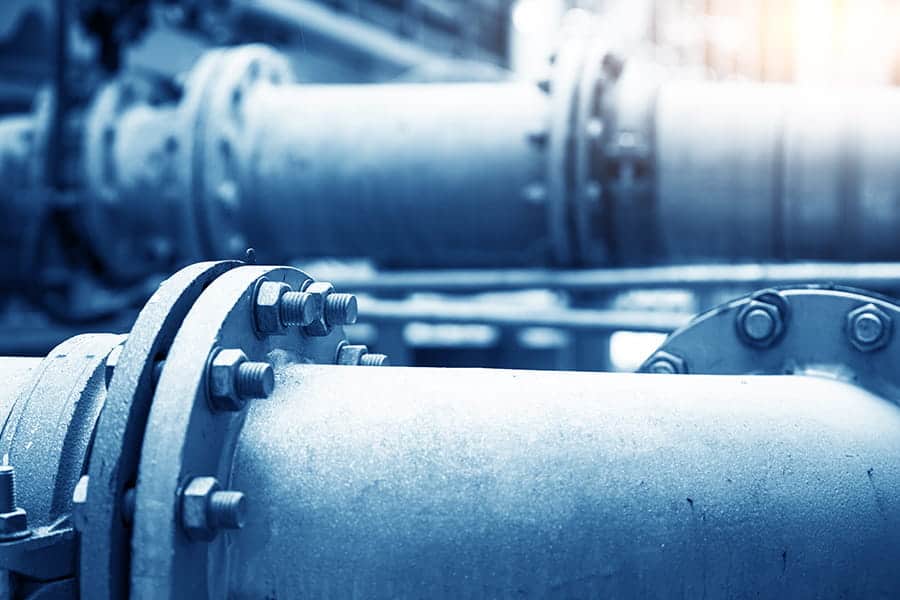In general, water quality tends to deteriorate with water age as disinfectant residual decreases, microbial activity increases, and disinfectant by-products increase. Locations at the end of long dead-end pipes generally have the highest water age and hence the poorest water quality.
A house at the end of such a dead-end should tend to be less attractive to buyers. But subdivision developers and real estate professionals have found a way to build houses to overcome this. They coined the romantic phrase “cul-de-sac” to describe these short dead-end streets. And the marketing works as every new subdivision seems to be loaded with cul-de-sacs. This is understandable as such streets are quieter due to less traffic.
But let’s look at the meaning of the term “cul-de-sac.” If you type it into a translator, it comes back as “dead end” which isn’t nearly so bucolic sounding. It gets worse if you take the words apart. Cul translates to “butt” or “ass,” while sac translates to “bag” or “sack.” Not many buyers are going to be attracted to a house at the butt-end of a bag. But say “cul-de-sac” and voila, you have a sale.
But let’s get back to water quality. Depending on the length of the dead end and the water use among the houses, a cul-de-sac adds hours or even days to water age. Just take a typical house water use of say 200 gallons/per connection/day and a few hundred feet of 6-inch pipe and you can see the impact on water age. (Or better yet, use your OpenFlows WaterGEMS or OpenFlows WaterCAD hydraulic model to calculate water age or disinfectant residual.)
For existing systems, there isn’t a lot that a water provider can do to improve the water age, and regulations on residual disinfectants are becoming stricter. What are the options to slow deterioration?
- Increase disinfectant dose at the source which increases cost, disinfectant by-products, and taste and odor complaints.
- Install disinfectant booster stations. This can reduce chemical costs. While you can’t afford to put booster stations at the start of each cul-de-sac, they may help at the entrance of a large subdivision with serious cul-de-sac issues.
- Manually operate hydrants or blowoffs at each dead end. This option is labor intensive, wastes water and the effects don’t last very long. Plus, not all dead ends have hydrants or blowoffs. We looked into this in a paper in the 1990s (Walski and Draus, 1996).
- Install and operate automated flushers. These don’t require chemicals or much labor, but they can waste a great deal of water and the flushed water requires disposal. Some locations may require dechlorination (although a case can be made that it isn’t needed). In other places, the water can be discharged to the storm or sanitary sewer. This can increase treatment plant loading but it may alleviate the problems with solids decomposition in the sewers by helping scour solids from the sewers.
I was recently involved in a study with some of my colleagues from Italy that tried to identify the amount of water that would need to be discharged from flushers to maintain a specific residual (Avvedimento et al, 2020). In some cases, the amounts were negligible while in others they were substantial (and the volume could vary with temperature and demands).
– I’ve even thought about the possibility of rewarding customers at the end of cul-de-sacs for using excessive water or requiring that they install an automated flusher in their homes. Water from the flusher would not be included in the water bill. But this flies in the face of water conservation efforts.
In new land developments, there may be additional options. Six-inch pipes are only required when fire fighting is considered. However, there is no requirement that a hydrant must be located at the end of the cul-de-sac. If the street is sufficiently short, the hydrant for the cul-de-sac may be placed on the main before the branch to the cul-de-sac splits off. The pipes in the cul-de-sac may then be 3- or 4-inch pipes. This can improve water age while reducing construction costs. Outside of North America, where fire flow requirements tend to be lower, these smaller pipes are common.
Another aspect of the problem is that houses in subdivisions are not built out the day the pipe is installed. It may take years before all the lots on the cul-de-sac have water-using customers on them. In the meantime, the water age problem is even worse than it will be when the lots are finally built out.
What tools are out there to analyze the problem in your system? Your OpenFlows WaterGEMS hydraulic model can help you analyze the water age as a first step. There may be some serious issues in certain areas that can require attention, or the model may show that problems with water quality may not be significant. If such concerns are significant, the next step would be to develop a model tracking the actual disinfectant residuals in your system. The model, calibrated with field sampling, can not only identify the extent of poor residuals but can enable you to test alternative solutions. You may find that a single disinfectant booster or two or three automated flushers can resolve the problem.
As with many other issues involving water quality and hydraulic capacity, there are tradeoffs that must be made. As long as people like to live at the bottom end of bags, water providers will need to grapple with the problems that they trigger.
____________________________
Walski, T. and Draus, S. 1996, “Predicting Water Quality Changes During Flushing,” AWWA Annual Convention, Toronto, Canada.
Avvedimento, S., S. Todeschini, C. Giudicianni, A. DiNardo, E. Creaco and T. Walski, “Modulating Nodal Outflows to Guarantee Sufficient Disinfectant Residuals in Water Distribution Networks,” Journal of Water Resources Planning and Management, 146(8):04020066, June 2020 DOI: 10.1061/(ASCE)WR.1943-5452.0001254.
Want to learn more from our resident water and wastewater expert? Join the Dr. Tom Walski Newsletter today!










